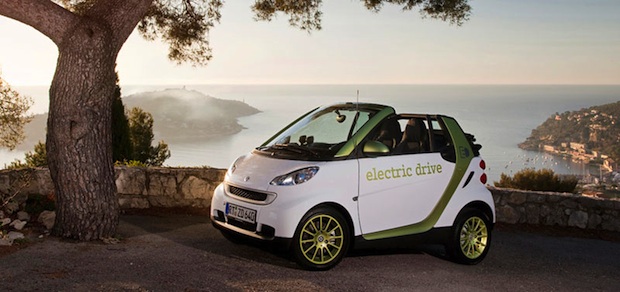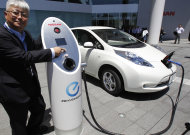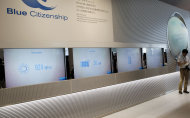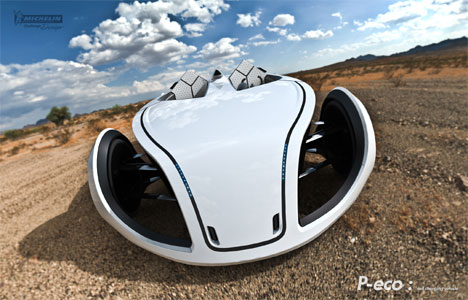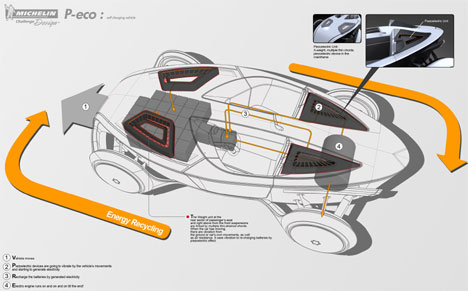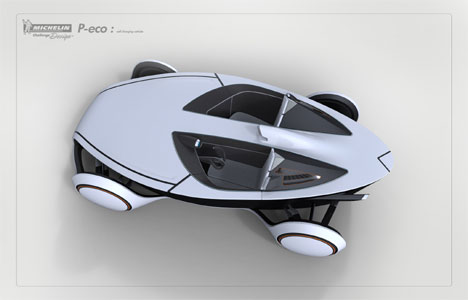by Brian Merchant

Photos: Brian Merchant
You probably haven't heard much about Volkswagen's forays into the electric car realm -- frankly, until recently, there hasn't been much to talk about. But that's finally changing, as the world's second largest carmaker just unveiled its Golf Blue E-motion electric car. Slated for a 2014 release, the e-motion will essentially be an electrified version of the popular Golf ("the most successful car Europe has ever seen"). VW invited TreeHugger out to its HQ in Wolfsburg, Germany to take an early model of the Golf E-motion for a spin:
Until earlier this year, Volkswagen's electric strategy was vague, always seeming far off on the horizon. But earlier this year, it announced that it planned to roll out a hybrid Jetta in 2012, an electric version of its Up in Europe in 2013, and the electric Golf in the US by 2014. By 2018, VW is aiming to have electric cars comprise 3-5% of its fleet.

The electric Golf will appear generally similar to the standard model that crowds European roadways everywhere (According to my unofficial calculations, about 83% of all cars in Europe are Golfs). The car we drove, in fact, was built with a standard Golf body. Essentially, the aim is to create an electric Golf that looks and feels like the version that the (non-US) world knows and welcomes. And I throw in that caveat because the Golf isn't terribly popular in the United States; it's far less present in the states than cousin Jetta.

As with just about all electric cars, the e-Golf is loaded with torque. It's full of pep, and quick off the line. It handled reasonably well, and was genuinely fun to drive, though it was prone to seize up a bit with too much acceleration. Braking is also a work in progress, as the current brakes displayed too much of that all-too-familiar stickiness that often plagues regenerative systems.
However, that stickiness comes with an upside in this case -- by shifting between D and D3 (and in between) the driver can choose how active the regenerative brakes are, and decide how much kinetic energy will be recovered. In D3, the brakes are extremely sensitive, but you'll send the maximum amount of energy back to the battery. It's a cool innovation (and a technology that's hopefully explored further in the future), and the most revolutionary feature of the electric Golf.

Driving the electric Golf looked and felt something like this:
The Golf gets around 150 kilometers (93 miles) on a charge, and uses a battery consisting of 180 lithium ion cells (holding a charge of 26.5 kWh). As for the rest of the stats, they look something like this:

An interface on the dash intuitively relays how much charge is left, and in the test drive model, all other features remained intact. A VW engineer explained how the instruments work, and outlined how to drive the electric Golf:
The no-frills experience of driving the e-Golf likely stemmed from the early version of the concept, yes, but also certainly from VW's approach to the electric car. Driving the Golf felt a lot like driving a comfortable, utilitarian sedan that you'd driven a million times before. VW isn't trying to create the most exciting, eyeball-grabbing EV on the market -- it's simply providing consumers with a solid, reliable option for its customers demanding electrification.

Complaints aside, it was already a pleasure to drive the Golf, though it was certainly less polished than, say, the Volt, which provided a thoroughly smooth ride. Which makes sense -- the e-Golf has 3 or 4 years to go before its scheduled for production, and the VW engineer said they're still ironing out many of the kinks, the braking among them. But it's a very promising start, and come 2014, folks interested in electric cars can expect another highly practical (and likely reasonably priced) option to be on the market.










